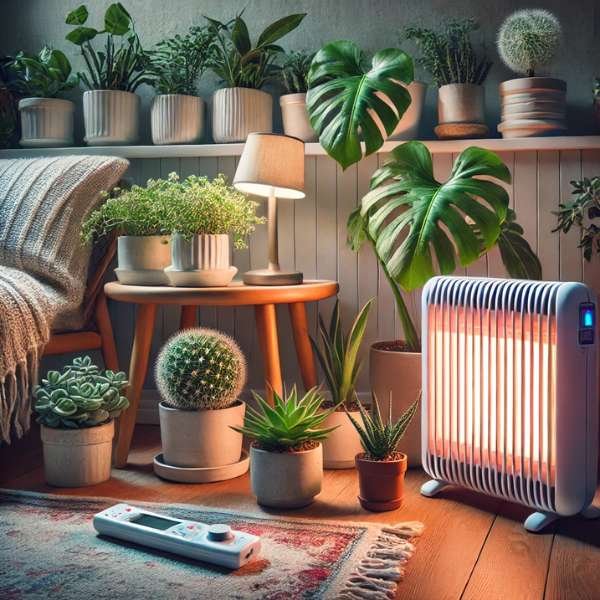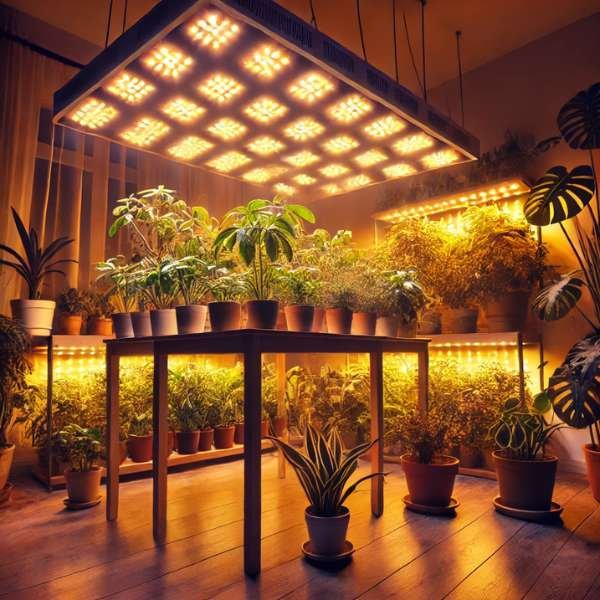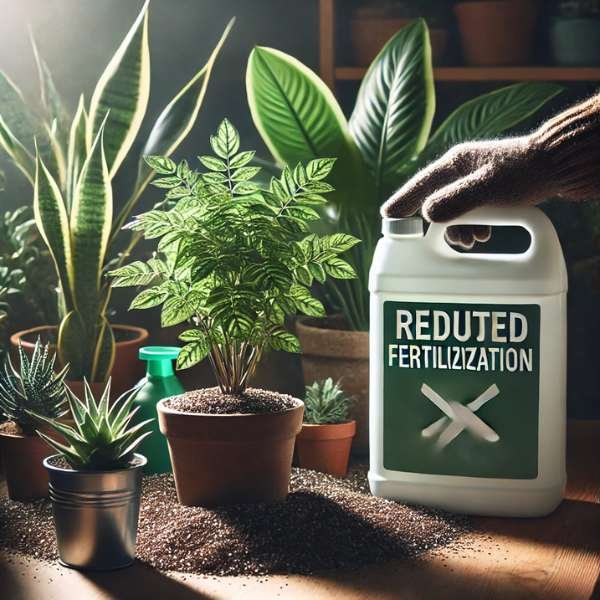Winter may be a difficult season for folks who love indoor flora, as the cold air and temperature drops can motivate giant pressure. Learning how to keep indoor plants warm in winter is vital to make sure they thrive even ultimately within the less warm months. From selecting the proper vicinity that includes supplemental warmth assets, there are several strategies to defend your plant life from wintry climates. In this manual, we’ll find out effective techniques to hold your indoor flowers wholesome, heat, and prepared to flourish whilst spring arrives.
Why Indoor Plants Struggle in Cold Weather

Indoor vegetation comes from several warm climates. When the temperature drops, their metabolic capabilities are sluggish, making it more difficult for them to take in water and vitamins. Cold air sucks moisture from every air and soil, resulting in dry, brittle leaves. Drafts from windows or doorways can also cause surprising temperature fluctuations, beautiful the vegetation. This wonder can bring about a stunted increase or, in severe instances, plant loss of existence.
Benefits of Protecting Your Plants from Winter Chill

By preserving your plant’s heat, you are keeping their natural techniques. Proper warm temperatures guarantee they’re able to hold absorbing water and vitamins, albeit at a slower price. It also reduces the risk of root harm, leaf drop, and sicknesses that thrive in bloodless, damp situations. Keeping your plant life heat in the course of iciness will set them up for sturdy growth even as spring arrives.
Understanding Your Plants’ Temperature Needs
Ideal Temperature Range for Common Indoor Plants

Most indoor flowers pick temperatures between 60°F and seventy five°F. Anything underneath 50°F can cause stress, mainly for tropical sorts like fiddle-leaf figs or pothos. These flowers, originating from hotter climates, are particularly susceptible to the cold.
Signs Your Indoor Plants Are Too Cold

Plants might not have a voice, however, they do send out alerts. If your plant life is too cold, you would possibly be aware of wilting leaves, yellowing, or unexpected leaf drop—mainly close to the base. Some plant life develops darkish spots, at the same time as others show symptoms of rot around the roots. These are clear indicators that your plant needs a greater warm temperature.
Choosing the Right Location for Your Indoor Plants
The Best Spots in Your Home to Keep Plants Warm

To protect your flowers from the cold, begin by way of assessing their vicinity. A spot near a radiator or heating vent can offer a warm temperature, but be careful—direct publicity to heat can dry out the plant. The ideal region is somewhere with oblique sunlight, far away from drafts but near sufficient windows to trap the wintry weather light.
Why South-Facing Windows Are Ideal for Winter Sunlight

During iciness, south-going through home windows are your plant life’s first-rate pals. These home windows get hold of the maximum sunlight throughout the day, imparting your indoor plant life the natural warmth they crave. If you have light-touchy flora, positioning them close to a south-dealing window will assist them take in the essential rays.
How to Insulate Your Home for Plant Warmth
Sealing Drafts to Prevent Cold Air

One of the best approaches to keep your plant life warm is via sealing drafts. Cold air can seep via cracks in windows and beneath doorways, decreasing the temperature around your vegetation. Weatherstripping, draft stoppers, or even caulking are quick fixes to assist in maintaining a heated environment on your greenery.
Using Curtains and Blinds to Retain Heat

Heavy curtains or thermal blinds can assist hold warmth inside your home. Close them at night to dam out the cold and lure warmness indoors. During the day, open them up to permit sunlight in and clearly heat your area.
DIY Solutions for Keeping Indoor Plants Warm
How to Make Plant Cozy Covers Using Household Items

You don’t want fancy devices to hold your flowers warm. Use smooth gadgets like vintage towels or blankets to insulate your flora’ pots. Wrapping those across the boxes permits maintaining warmth around the roots. Bubble wrap is another extremely good choice to cover the edges of pots, correctly preserving the warm temperature.
Creating a Microclimate with Mini Greenhouses or Plant Tents

For more adventurous plant parents, setting up a mini greenhouse can be a fun and effective way to guard your vegetation. Repurposing glass packing containers or the use of clean plastic can create a microclimate, which traps warmness and moisture. This method is especially beneficial for tropical flowers that require better humidity degrees in addition to warm temperatures.
Using Heat Sources to Warm Indoor Plants
Are Heating Mats Safe for Plants?

Heating mats, commonly used for seed germination, are also brilliant for keeping plant roots heated in the course of iciness. These mats lightly warm the soil without overheating the plant itself, making them safe and powerful for bloodless-sensitive vegetation.
How to Use Space Heaters Without Damaging Your Plants

Space warmers can be beneficial for warming up a room, however, be careful no longer to area them too close to your plant life. Direct exposure to the warmth from a space heater can motivate flora to dry out. Instead, function the heater at a safe distance where it is able to raise the overall room temperature without sizzling your greenery.
Maximizing Natural Sunlight During Winter Months
How to Adjust Plant Placement for Maximum Sun Exposure

Winter daylight is often weaker and greater fleeting, so it’s critical to ensure your vegetation gets as a great deal of light as possible. Move your flowers closer to windows during the day, and rotate them regularly to ensure all aspects get hold of adequate mild.
Tips for Reflecting Light Back onto Your Plants

Mirrors or different reflective surfaces can help extend the sunlight in a room. By strategically setting these items near your vegetation, you could bounce extra mild onto them, giving them an extra increase all through the darker months.
Supplementing with Grow Lights for Extra Warmth
Choosing the Right Grow Lights for Winter Care

Grow lighting can be a super answer when herbal sunlight becomes restrained in wintry weather. LED grow lighting provides a strength-efficient choice, handing over an appropriate light spectrum to assist plant increase. These lighting fixtures also offer gentle warm temperatures, helping to keep a comfortable and balanced environment for your indoor flowers all through the colder months. By incorporating grow lighting, you ensure that your vegetation acquires the light and heat it needs to live healthfully during the season.
How Long Should You Keep Grow Lights On in Winter?

During the winter months, it’s often necessary to keep grow lights on for up to 12-14 hours a day to replicate the longer daylight hours of the summer season. This ensures your flowers get sufficient light for photosynthesis, even if herbal daylight is scarce.
Watering Indoor Plants Properly in Winter
How to Prevent Overwatering When Plants Are Dormant

In winter, most plants go into a period of dormancy, meaning they require less water. Overwatering can lead to root rot, which is especially common in colder months. Let the soil dry out slightly between waterings, and always check the moisture level before watering again.
The Best Time of Day to Water Plants in Cold Weather

Morning is the best time to water your plants in winter. This gives them enough time to absorb the moisture before temperatures drop at night. Avoid watering in the evening, as cooler nighttime temperatures can lead to excess water sitting in the soil, increasing the risk of rot.
Maintaining Humidity Levels to Combat Winter Dryness
How Low Humidity Affects Indoor Plants in Winter

Central heating systems can significantly reduce indoor humidity, causing stress to plants by drying out their leaves. Tropical plants like ferns, orchids, and peace lilies are particularly susceptible, often showing signs like brown leaf tips or wilting.
Simple Ways to Increase Humidity for Happy Plants

You can increase humidity levels by misting your plants, placing bowls of water nearby to evaporate, or grouping plants together to create a more humid microenvironment. Humidity trays filled with water and pebbles are another effective and simple solution to combat dry indoor air.
Should You Fertilize Indoor Plants in Winter?
Why Less is More When it Comes to Winter Fertilizing

During the winter months, your plants don’t need as many nutrients. Over-fertilizing can lead to a buildup of salts in the soil, which can damage your plant’s roots. It’s best to either reduce fertilization or avoid it altogether until the growing season resumes in spring.
Natural Fertilizer Alternatives to Use During the Cold Months

If you must fertilize, opt for natural alternatives like compost tea or diluted worm castings. These are gentle on plants and won’t overwhelm their reduced nutrient needs during winter.
How to Protect Sensitive Plants from Cold Shock
Which Indoor Plants Are Most Vulnerable to Cold Temperatures

Tropical plants, succulents, and orchids are particularly sensitive to cold. These plants are used in warm climates and can quickly succumb to cold stress, showing symptoms like wilting, leaf drop, or blackened tips.
To treat abiotic diseases in indoor plants, caused by environmental stressors like cold temperatures, which can lead to stunted growth and leaf damage. Plants most vulnerable to cold include tropical varieties such as ferns, orchids, and peace lilies, which prefer warmer climates. To prevent cold-related stress, keep indoor plants in consistently warm spaces, away from drafts, and maintain stable room temperatures.
Quick Tips for Saving Plants Exposed to Sudden Cold

If your plant has been exposed to a sudden temperature drop, act quickly. Move it to a warmer spot, trim away any damaged leaves, and increase the humidity around it. In extreme cases, repotting the plant in fresh soil may be necessary to save it from root damage.
Conclusion
Keeping your indoor vegetation warm all through wintry weather may appear difficult, but with the proper techniques, it’s absolutely plausible. Focus on locating the perfect vicinity, keeping the right humidity, and supplying the important warmth, and your flowers will no longer be the most effective live to tell the tale however hold to thrive via the chillier months. As you gain revel in, you’ll find your plant life flourishing yr-spherical, bringing an experience of lifestyles and quietness to your house.

